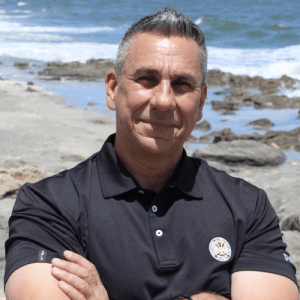The Good and Bad of Strong Latent Demand
While golf industry leaders converged in sunny San Diego in April for the 2019 NGF Symposium at Rancho Bernardo Inn, Evan Malter waited in the school pickup line to take his son to hockey practice.
Malter, a 45-year-old father of two boys, grew up not far from The Country Club in Brookline, Massachusetts. He witnessed Curtis Strange win the 1988 U.S. Open there in a Monday playoff, played summer rounds at New Seabury in Cape Cod and watched Bubba Watson hook a wedge around the trees at No. 10 to win the 2012 Masters. Yet despite competing in a weekly fantasy golf contest with friends, watching golf frequently and having four target greens at his disposal in his backyard, his clubs have collected dust since he last played in September 2017 as part of a friend’s pre-wedding festivities.
“Whether it was my business startup, family commitments, or trying to prep our house for sale, I never found the time to play,” Malter says.
As the great philosopher Ferris Bueller once said, “Life moves pretty fast. If you don’t stop and look around once in a while, you could miss it.”
Malter’s story isn’t unique. Derek Bilcik is among those who can relate. The 48-year-old Yardley, Pennsylvania, resident blamed starting a challenging new job last year at Bank of America, along with some poor prioritizing on his part, for never posting a round in 2018. That’s a far cry from just two years earlier, when he successfully accomplished his goal of playing golf in all 12 months. It’s not the easiest goal for golfers in the Northeast and Bilcik ticked the final box on December 31 while the temperature hovered around freezing and snow filled many of the bunkers at Makefield Highlands in Yardley.
“I’ve got clubs, multiple sets, and I definitely want to play, but just haven’t been able to recently,” said Bilcik, who now finds himself wrapped up in a major home improvement project. “There’s just been too much going on.”
Both Malter and Bilcik said they recognize the need to make golf a priority this year, be it signing up for a weekend tournament or scheduling a buddies’ trip that officially puts it on the schedule.
While Malter and Bilcik count themselves as golfers, the industry does not. By the NGF’s measurement, you have to have played on a course within the last year to be officially counted as a golfer. Malter, Bilcik and others like them fall into a category that was a hot topic of conversation at the NGF Symposium: Latent demand, a measure of those who didn’t play golf on a course within the past year, but say they’re interested in doing so now.
The number of these “non-golfers” who say they’re very interested in playing golf is 14.7 million, up more than 5 million in the past five years. Tack on another 32.7 million Americans who say they’re “somewhat” interested and you’ve got a substantial number that represents a potential huge growth opportunity for golf.
Almost half of the latent demand pool is comprised of lapsed golfers who played on a course previously, but not within the past year. Both Malter and Bilcik fall in this category, while the rest are those who have never played on a course.
Still, it’s important to note that most in the latent demand category have very little golf experience. Two-thirds of those who say they have played before also say they played fewer than 10 rounds of golf in their life.
Newcomers and Interest
In 2018, 2.6 million people played golf on a course for the first time, representing the highest figure the NGF has ever recorded dating back more than 30 years. If you take an even bigger birds-eye view of interest in golf, 107 million Americans played, watched or read about golf, a figure that represents 36 percent of the U.S. population over the age of 5, and a rise of 10 percent from the previous year.
Even before Tiger Woods won the Masters in April, his latest comeback from back surgery already had been responsible for a jump in ratings of almost 30 percent for televised tournaments in which he played. He also contributed to a 12 percent increase in the game’s reach, with more than 74 million non-golfers watching or reading about golf last year. Seth Waugh, the CEO of the PGA of America, says Woods’s victory at the Masters could be a catalyst for continued growth.
“We hope that it will have the same effect that he had his first go-around on participation,” Waugh said. “A lot of those kinds of growth indicators were already signaling a good market, and we hope that this will turbocharge it a little bit.”

A driving range full of high-school aged kids on a weekday afternoon.
The fact that latent demand remains strong is both a blessing and a curse.
The stat speaks to golf’s aspirational quality and that the sport is positively perceived by a huge swath of the American public. This interest provides the industry with an opportunity to grow the game and a current stream of new golfers to come into the market. But it also suggests that the industry is failing to connect with 47.4 million people who are very or somewhat interested in playing golf.
The golf industry not only needs to create ways to bring back lapsed or past golfers, the majority of those whom just tried the game briefly, but also to convert “strong interest” into new trials and eventually create more committed golfers.
The good news is there are more opportunities for trial than ever before. For starters, approximately 75 percent of golf courses are open to all players, matching the highest public-to-private ratio in history. There is also a growing realization and acceptance that golf doesn’t have to be 18 holes and six hours away from the family on the weekend; it can be engaging with the kids for three, six or nine holes; it can be a night out at an off-course participation space such as Topgolf, Drive Shack or BigShots; it can be time spent on an indoor simulator, whether that’s practicing or playing in a league.
The toughest hurdle to overcome is often the step from trial to commitment. While golf has had strong beginner numbers in recent years – over 2 million for five years running – the overall participation figures haven’t noticeably increased over that period, indicating a retention problem for these newcomers.

Introducing kids to golf while they are young increases the chances they will become a committed golfer in the future.
Henry DeLozier, a partner at Global Golf Advisors, says in order to “really register with people” the industry also needs to do a better job of inviting them to come play golf at their facilities.
That’s where Welcome2Golf may come into play. A market-by-market growth campaign spearheaded by the NGF, Welcome2Golf aims to motivate this rising population of interested non-golfers and lapsed golfers to take the next step and get to the golf course, the driving range or a venue like Topgolf where they can swing a golf club.
Welcome2Golf is testing a marketing initiative this summer in Denver, a strong golf market with an estimated latent demand pool of almost 650,000. The intent is to activate interest and increase the awareness of golf, with a new web site geared to help make golf more accessible.
“Latent demand has been growing for the past five years. Why is there this disconnect?” NGF President and Chief Executive Officer Joe Beditz said. “People tell us they are very interested in playing golf but they don’t. We ask them, ‘Why don’t you? Why haven’t you acted upon it yet?’ The answers are often simple: ‘I haven’t been invited. I don’t know where to go. I don’t have anybody to play with.’ We want to give people a nudge.”
Short Game.
"*" indicates required fields
How can we help?
NGF Membership Concierge

"Moe"
Learn From NGF Members
 Ship Sticks Secrets to a Hassle-Free Buddies Golf Trip
Ship Sticks Secrets to a Hassle-Free Buddies Golf Trip
Whether you’re the head planner of your upcoming buddies golf trip or simply along for the ride, we’ve gathered a few easy ways to keep everyone in your group happy.
Read More... Golf Course Turf, Soil and Water Quality Diagnostic Testing
Golf Course Turf, Soil and Water Quality Diagnostic Testing
As humans, we see our primary care physician on a regular basis to proactively evaluate our vital signs. Likewise, a superintendent should perform frequent diagnostic testing on their golf course.
Read More... Unlocking Distance: Launch Conditions and Angle of Attack
Unlocking Distance: Launch Conditions and Angle of Attack
We’ve long known that higher launch and lower spin is a powerful combination for generating consistently long and straight tee shots. A key factor in optimizing launch conditions, one often overlooked, is ...
Read More...




